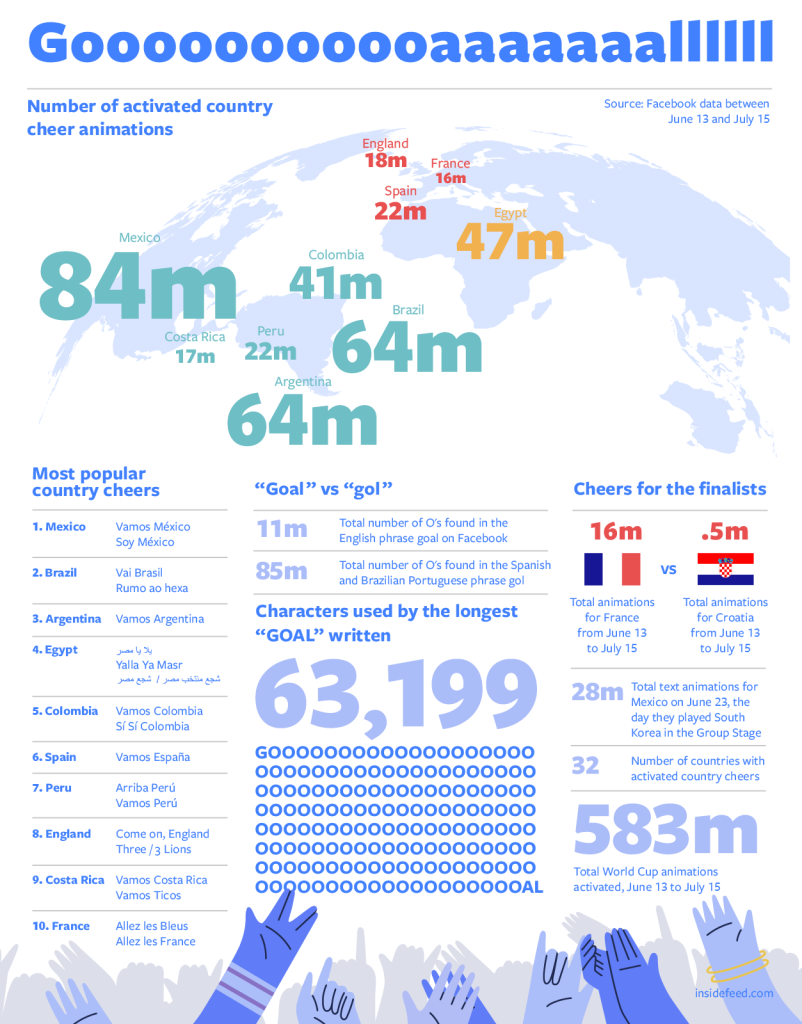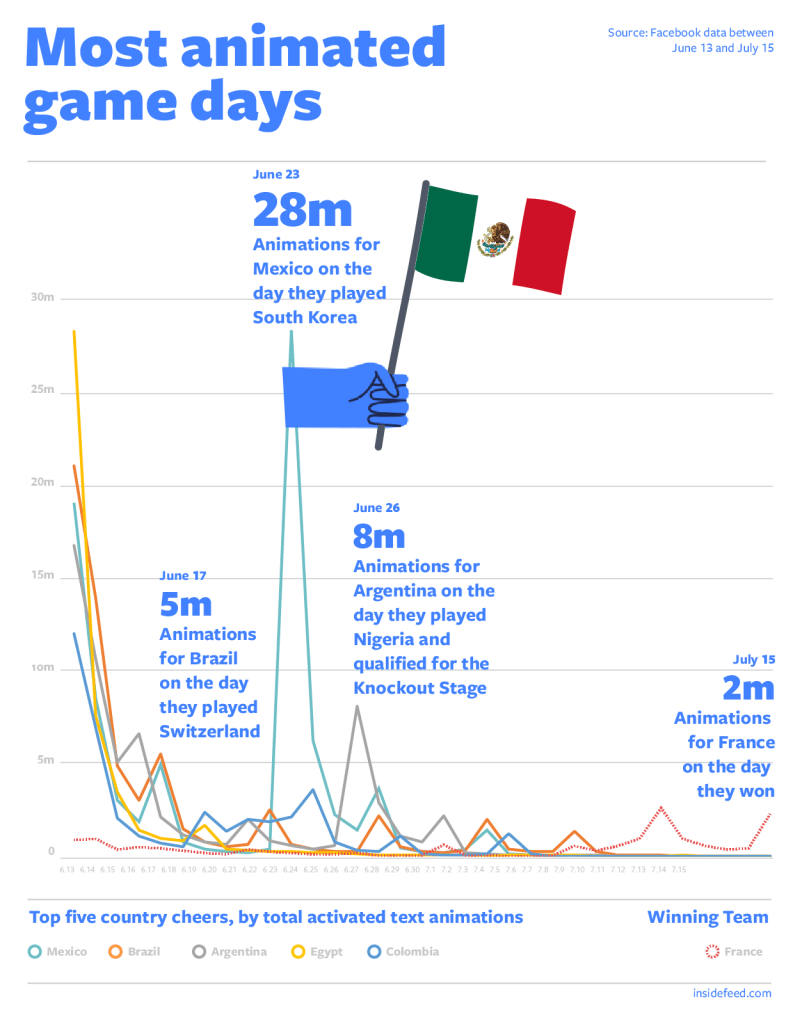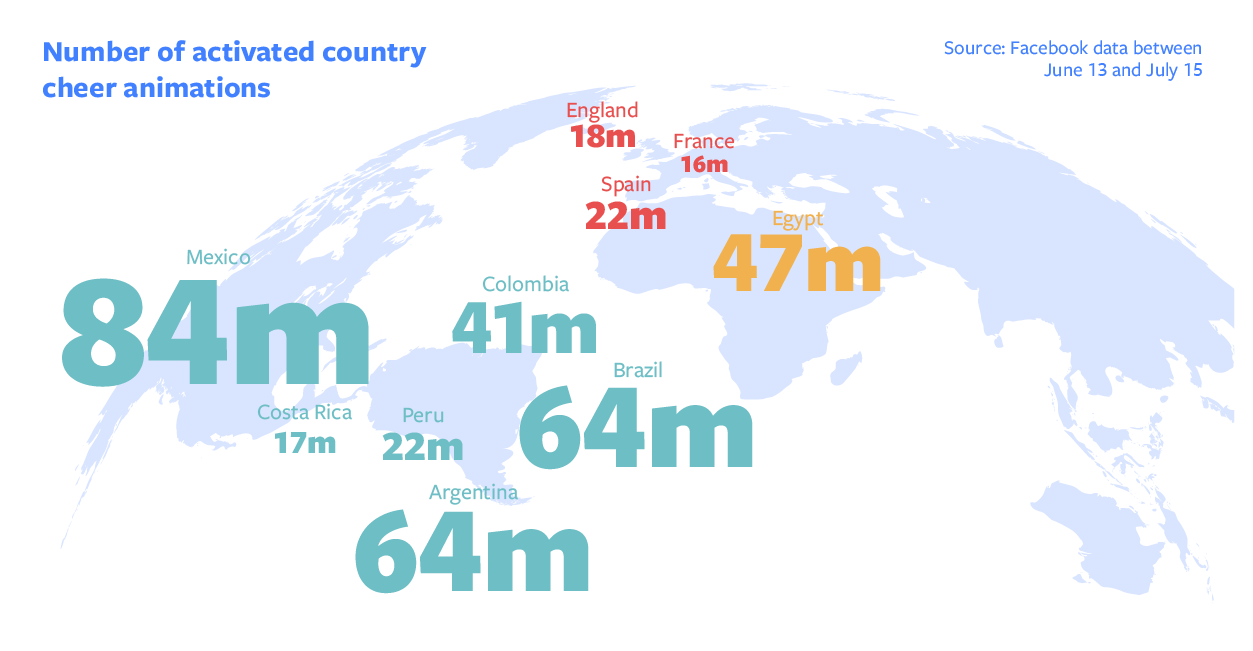By Rujuta Kortikar, Data Science Intern and Nick Blair, Product Producer
Billions of people followed the 2018 World Cup, which came to a rousing conclusion on Sunday, July 15. During the tournament, people visited Facebook to cheer, celebrate and go wild for amazing goals. This year, one product team at Facebook decided to to build something fun and new for the world’s soccer fans — and do it at a massive scale.
During the tournament, when fans of the English national team typed “Three Lions” into a post or comment, they might have seen England’s team colors shoot across the screen along with an animation of lions, a flag and celebratory streamers. When fans of Nigeria posted the team’s “Up Super Eagle” cheer, they might have seen a stream of green and white alongside an eagle. And no matter what country a fan was cheering for, celebrating a big goal — or GOOOOOOOOOOALLL! — activated a soccer ball rocketing across the screen with fireworks and applause.
These kinds of text effects first rolled out on Facebook in 2017, and there are several in rotation today. You won’t find an official list anywhere, though. “We want these features to be fun and unexpected, so we let people discover the effects themselves, rather than talking about them publicly,” says brand marketing manager Colin Murtagh.
Now that the World Cup has wrapped and these soccer animations are no longer active, the team can share that more than 583 million tournament-related animations appeared on Facebook this summer. In total, there were 78 phrases that triggered animations: a few celebratory phrases for each of the 32 countries in the tournament and nine language variants of “Goal!”
Coming up with the actual country phrases was no easy feat. They needed to be phrases that people would realistically type out in a post or comment, so they had to be brief. That meant some of the longer anthems that soccer fans sing together in stadiums and bars were out. (Sorry Mexico fans, no animations for “Cielito Lindo.”) They also needed to be phrases that, when typed, would reliably be about soccer, so “Aguante Argentina” (or, “Keep it Up, Argentina”) was out, as that could be used in many different contexts.
Creative Director Zach Stubenvoll, who oversaw the project, describes the process by saying, “Creatively, we pushed the animations to express each team’s pride and capture some of the excitement of watching a game live in a stadium. We looked at every aspect of the experience — from color, icons, motion and sound design — making sure each was thoughtfully considered and relevant for fans.”
During the 2014 World Cup, Facebook noticed that fans were celebrating big goals on the platform in real-time by typing “Goal!” or “Gol!”, but that they weren’t content to use just a single O. To ensure that they could capture the full scope of fans’ enthusiasm, the team designing this year’s animations developed a new method of pattern matching that allowed for any number of G‘s, O‘s, A‘s, and L‘s to activate the animation. In English, “Goal,” “goalll,” “goooooaaaalllll” and “GOOOOOOOOOOOOOOOOOOOOOOAL” all resulted in the animation. The team then repeated this process for nine different language variants of “goal.”
In 2018, more than 11 million O‘s were used in instances of the English word “goal” on Facebook. But there were more than 85 million O‘s in instances of “gol”, the word in Spanish and Brazilian Portuguese. The most exuberant “goal” contained 63,199 characters—or the equivalent of 17 pages of text written in single-spaced 12-point font.





